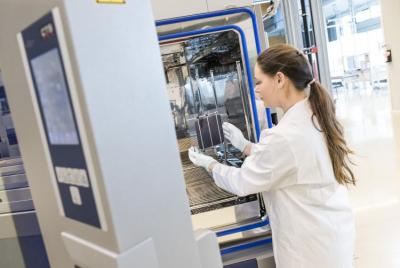Oxford Photovoltaics, in collaboration with Helmholtz-Zentrum Berlin (HZB) and the Photovoltaics and Optoelectronics Device Group at the University of Oxford, produced a 1 cm2 perovskite-silicon two-terminal tandem solar cell with a verified conversion efficiency of 25.2%. The two-terminal tandem solar cell efficiency was certified by the Fraunhofer Institute for Solar Energy Systems ISE.

Dr Chris Case, Chief Technology Officer at Oxford PV commented, 'The unique, optically enhanced architecture developed as part of this collaboration, minimizes losses, and has helped us achieve this record setting efficiency'.
The two-terminal design is intended to simplify the integration into PV module fabrication, compared to four terminal architectures often used in scientific research, eliminating additional materials, weight and power invertor challenges found in four-terminal tandem cells.
Oxford PV and HZB announced the start of this collaboration initiative in January 2018.



